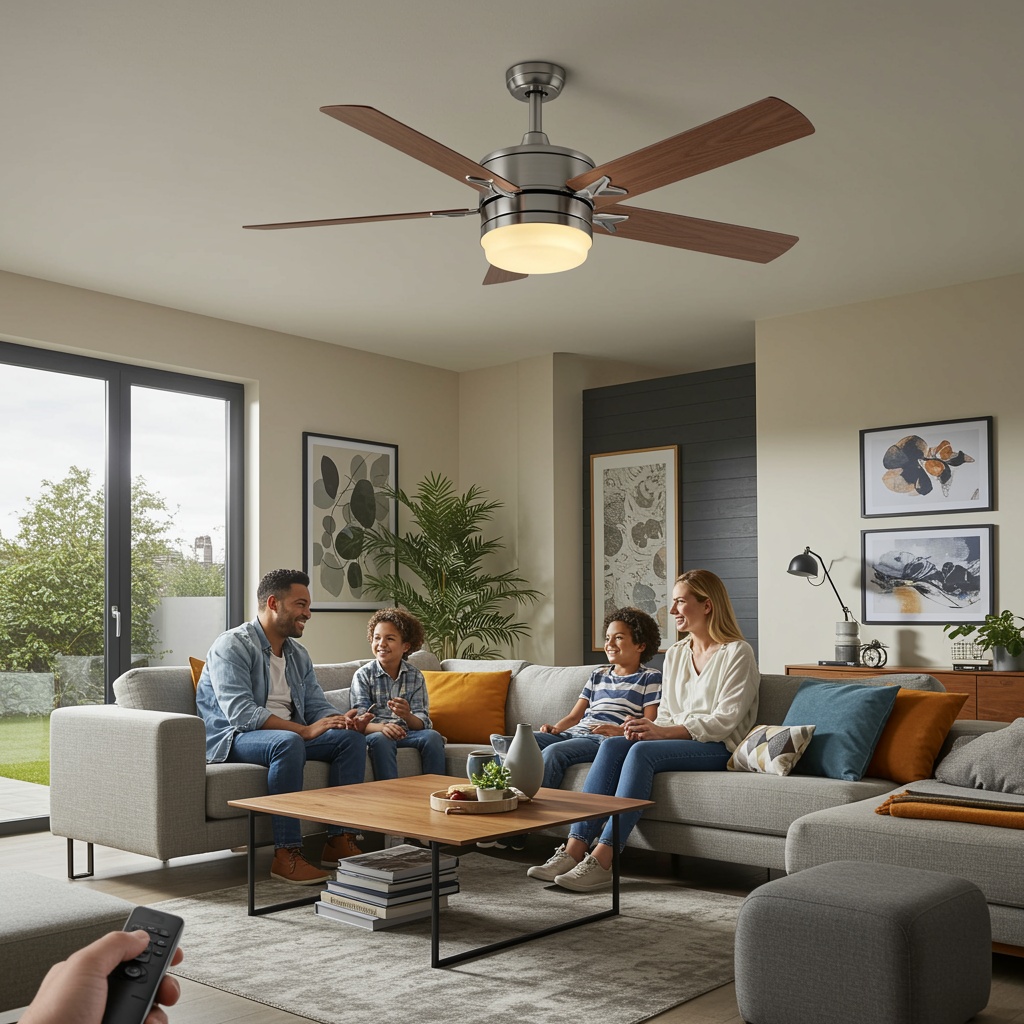
A Spin Through History: From Punkahs to Powered Comfort
Ceiling fans may feel like a modern convenience, but their history stretches back thousands of years. Around 500 BC in India, large palm-leaf punkahs were suspended from ceilings and manually swung by servants to create a cooling breeze. These early designs proved a simple truth: moving air makes heat more tolerable.
By the late 1800s, fans began taking mechanical form. In the 1860s and 1870s, steam and water-powered rotary fans circulated air in American stores and restaurants. Then, in 1882, inventor Philip Diehl—known for his Singer sewing machine motor—attached fan blades to an electric motor, creating the first electrically powered ceiling fan. Soon he added lights, introducing the first fan-light combination fixture. By the 1910s, four-blade models became the quiet, efficient standard we know today.
Though fans temporarily lost popularity in the U.S. as air conditioning spread, they surged back during the energy crises of the 1970s and 1980s. Today, they’ve earned a permanent place in homes worldwide—combining comfort, efficiency, and style in ways that continue to evolve.
1. More Comfort with Less Effort
The main reason ceiling fans remain popular is the wind-chill effect. When blades spin counterclockwise, air moves across your skin, speeding evaporation and convection. This doesn’t lower the room’s temperature, but it makes you feel up to 4 °F cooler—meaning you can stay comfortable even if the thermostat is higher.
That gentle breeze matters most in humid or stagnant conditions, where moving air dramatically improves comfort and keeps rooms feeling fresh.
2. Savings That Add Up
Ceiling fans are energy misers. Running one typically costs less than $0.01 per hour, while air conditioning can cost $0.50 to $0.90 per hour depending on the system and location. That’s why pairing fans with AC is so powerful: you can raise the thermostat a few degrees, save money, and still feel cool.
Research from the Berkeley Center for the Built Environment found that every watt a fan consumes can offset 10 to 100 watts an HVAC system would otherwise use. Studies in Florida homes show that raising the thermostat by just 2 °F while running ceiling fans can cut annual cooling costs by 14%.
And fans don’t just help in summer. Reversing blade direction to clockwise on low speed circulates warm air down from the ceiling during winter, trimming heating bills by roughly 15%.
3. A Stylish Upgrade That Improves Home Appeal
Ceiling fans aren’t just practical—they’re part of a home’s style story. Modern designs range from sleek, minimalist models to rustic wood finishes, bold colors, and ultra-quiet smart-enabled fans with Wi-Fi or Bluetooth control.
The global ceiling fan market, valued at $14.2 billion in 2023, is projected to grow to nearly $19 billion by the early 2030s, driven largely by decorative and smart-home-friendly designs. While fans may not directly add a dollar amount to resale value, they boost energy efficiency and give rooms a more updated, desirable look—key factors in home appeal.
4. Perfect Partners with Air Conditioning
Air conditioners cool the air, but ceiling fans distribute it. Because they hang at the center of a room, ceiling fans move air more broadly than standing or window fans. That circulation eliminates hot and cold spots, spreads cooled air evenly, and makes your HVAC system’s work more effective.
As UC Berkeley’s Stefano Schiavon put it,
“Every time you turn on an air conditioner, you should have a fan on, because there will be substantial energy savings.”
Fans and air conditioners are not competitors. They’re teammates!
5. Year-Round Performance
Ceiling fans are one of the few household appliances that help in both summer and winter. In warm weather, blades should spin counterclockwise to push air downward, creating the cooling wind-chill effect. In winter, switching to clockwise circulation at low speed pulls cool air up and pushes warm air down the walls, preventing heat from pooling at the ceiling.
The result: more even temperatures, less HVAC strain, and savings in every season.
A Breeze of Comfort—Powered by ServiceOne
Even though ServiceOne doesn’t install ceiling fans, they’re invested in how well fans and HVAC systems work together. Fans may create the breeze, but your air conditioner and furnace provide the temperature control—and ServiceOne keeps those systems efficient, reliable, and ready for every season.
Think of your AC and ceiling fan as a dynamic duo: one sets the climate, the other spreads it evenly. ServiceOne is the behind-the-scenes team that keeps your HVAC system humming so you can enjoy the full benefits of both.
Final Spin
From ancient palm-leaf fans in India to today’s sleek, smart ceiling fixtures, these simple devices have always done one thing exceptionally well: move air to make life more comfortable. They save energy, reduce costs, improve comfort, and even enhance home design.
Ceiling fans don’t just keep you cool in the summer—they keep your wallet happy and your HVAC system running smoother all year long. And with ServiceOne ensuring your AC is always ready to team up, you’ll feel the difference no matter the season.
Here’s to spinning smarter, cooler, and comfier. You’re sure to be a fan of ceiliing fans!

